Saturday, 23rd November 2019
This morning at breakfast we again fell foul of a miscommunication, which we had also experienced in India, when Robert’s request for two fried eggs was interpreted as two portions of two fried eggs each.
So, fortified by a surfeit of eggs, we set off on a walk taking in the major sights which we had identified the evening before. This took us along the beach . . .
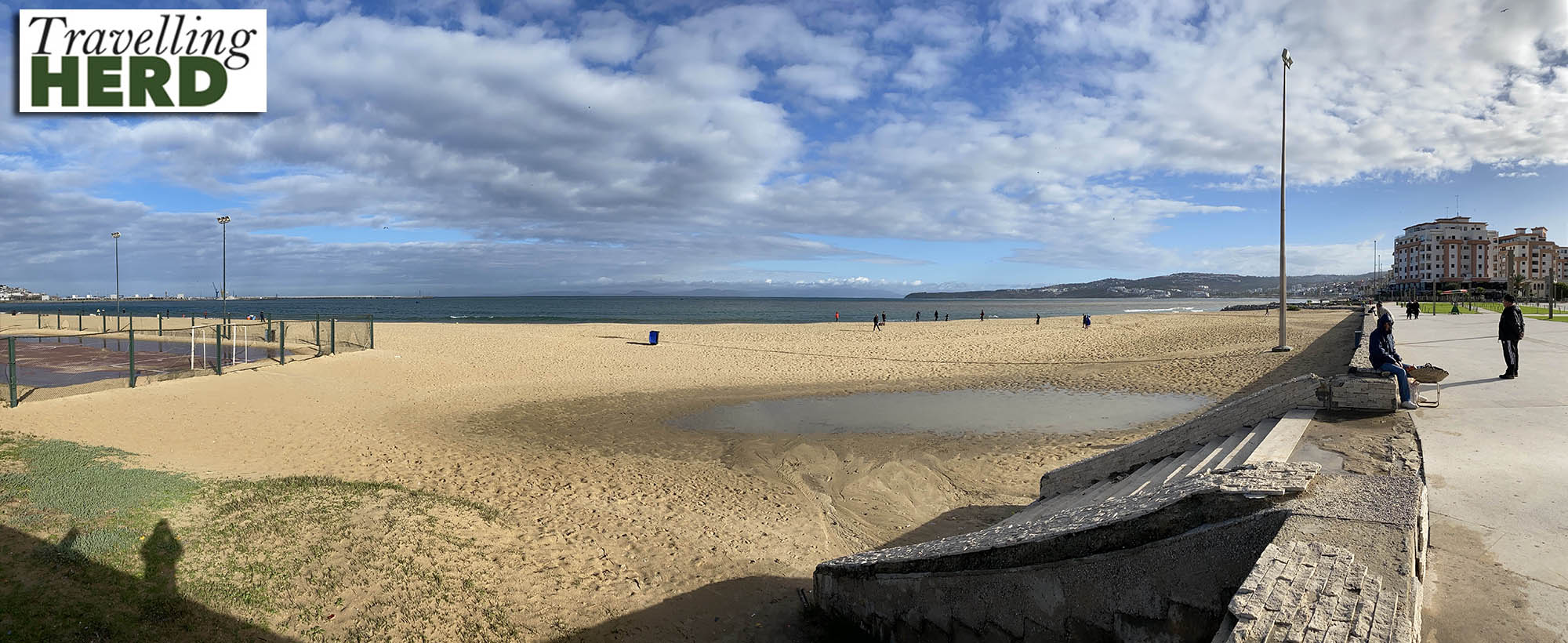
. . . where an intriguing fishing technique was in progress. A row of fishermen were pulling in a line, which we think was attached to a fishing boat, but it could have been attached to nets. They had a rhythmic action going, almost like a tug of war, which involved stamping one foot in unison as they worked their way up and away from the sea hauling the line up the beach as they went. The one furthest from the water would periodically move back towards the ocean to take up the rope and start pulling again. We had thought to stay long enough to see what they hauled in but it was a more time-consuming process than expected and we walked on.
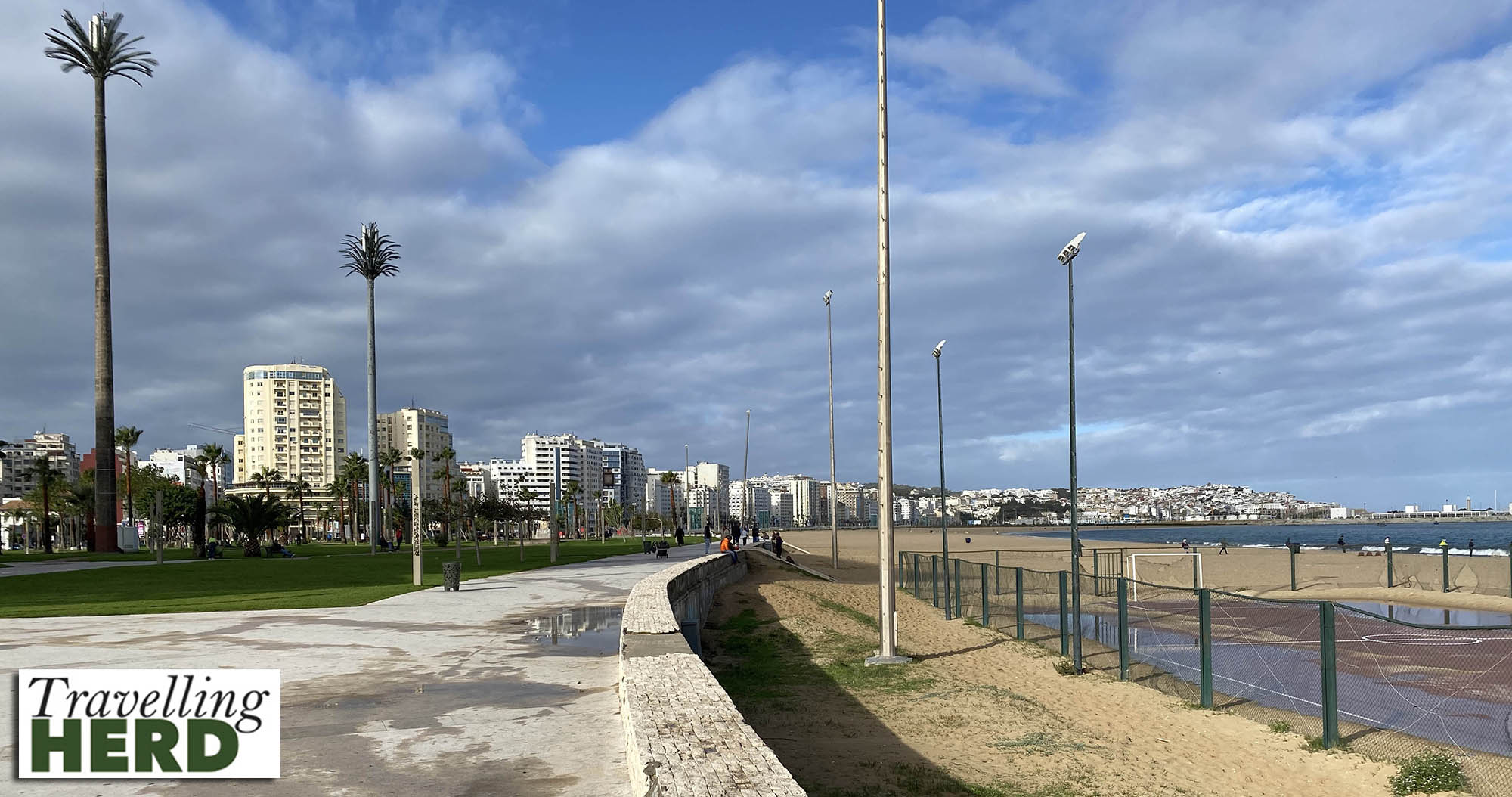
Tanger, also called Tangier and Tangiers, has an interesting history: in 1923 colonial powers deemed it to have international status and it became a destination for European and American diplomats, spies and businessmen. It remained under international control until 1956 when it was returned to the recently independent Kingdom of Morocco.
At the end of Tanger beach is the Kasbah.
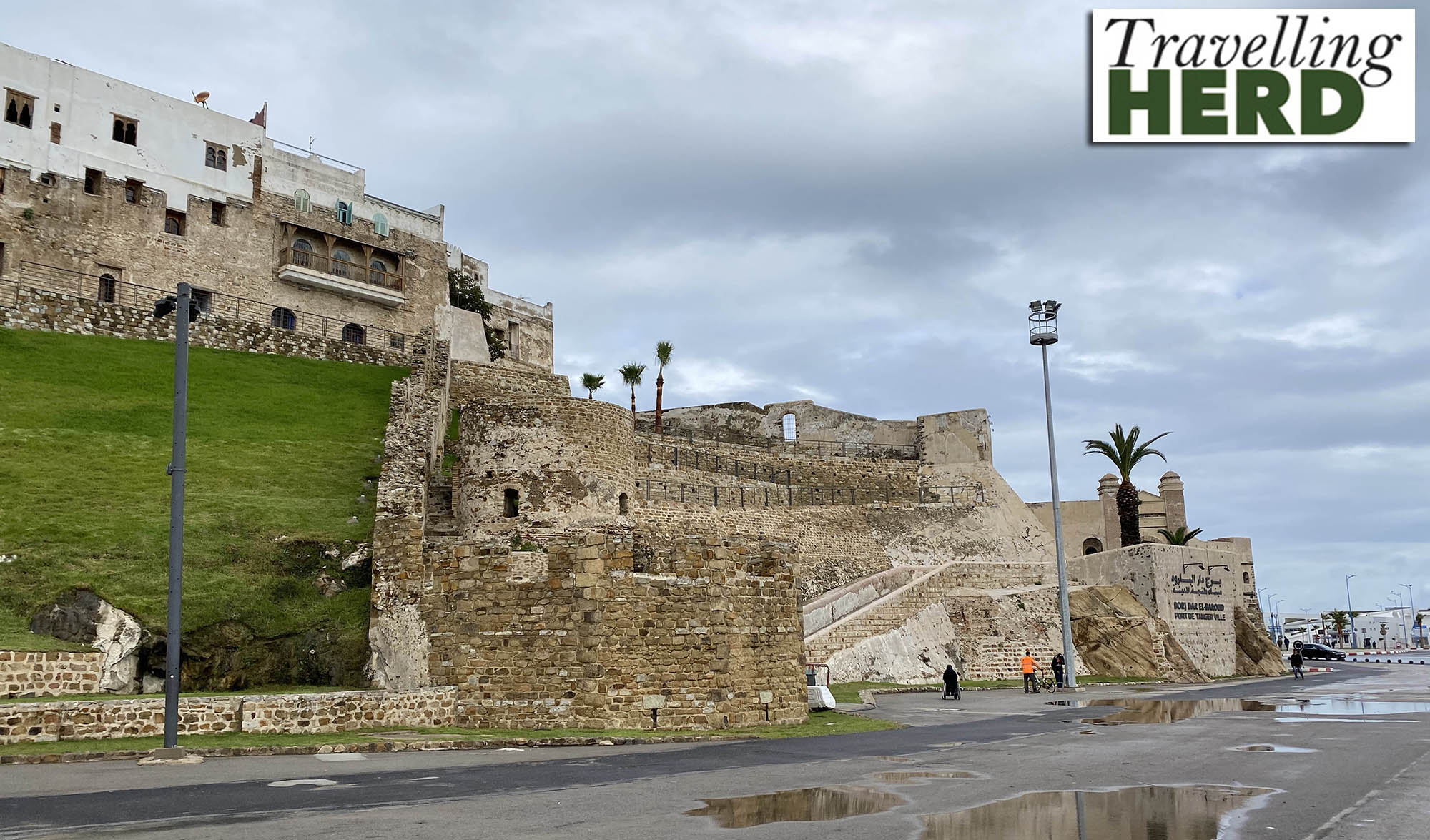
Tanger has been successively settled and fortified by the Phoenicians, the Carthaginians and the Romans who all appreciated its strategic importance, situated on the Straits of Gibraltar. Subsequently Arab and Berber forces attempted to conquer Spain from here. The Kasbah was built on the site of the Roman settlement and since then land reclamation has effectively moved it further inland. It is said that Samuel Pepys sat under a fig tree in the Place de la Kasbah and wrote about Tanger in his famous diary.
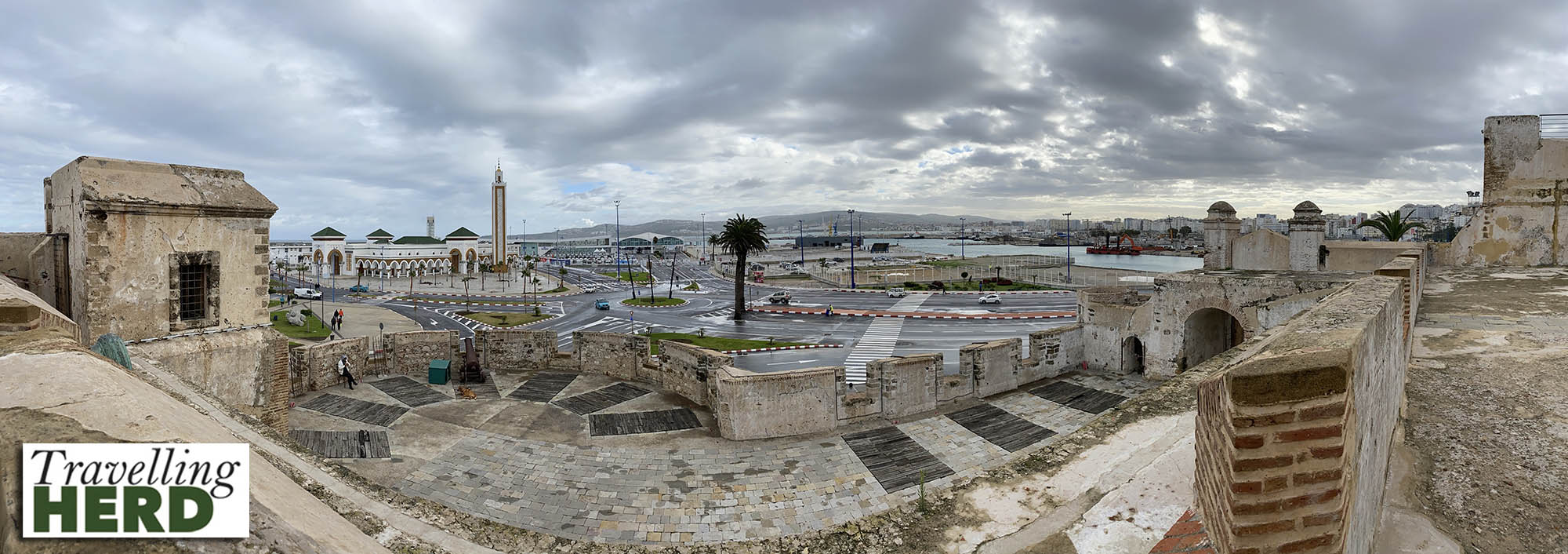
The Kasbah Museum, in a former sultan’s palace, was unfortunately closed as we passed but on top of the fortifications two enormous cannons stand unused and rusting. They are on tracks so that they could have been turned and directed at any approaching hostile forces.
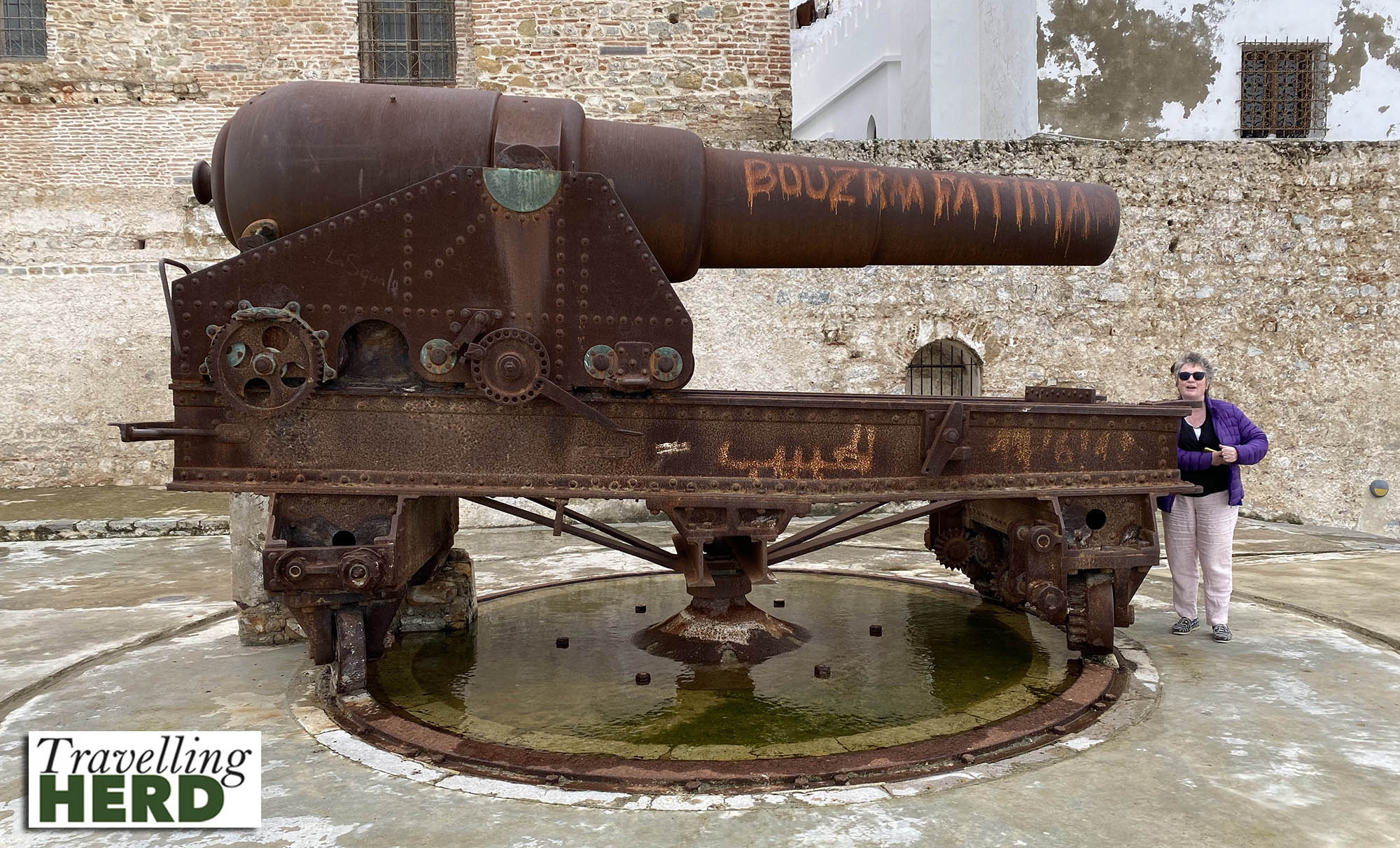
From here we walked through the Bab el-Bahar (The Gate of the Sea) and along the ramparts with views of the port to the Medina: a maze of streets, steps and houses . . .
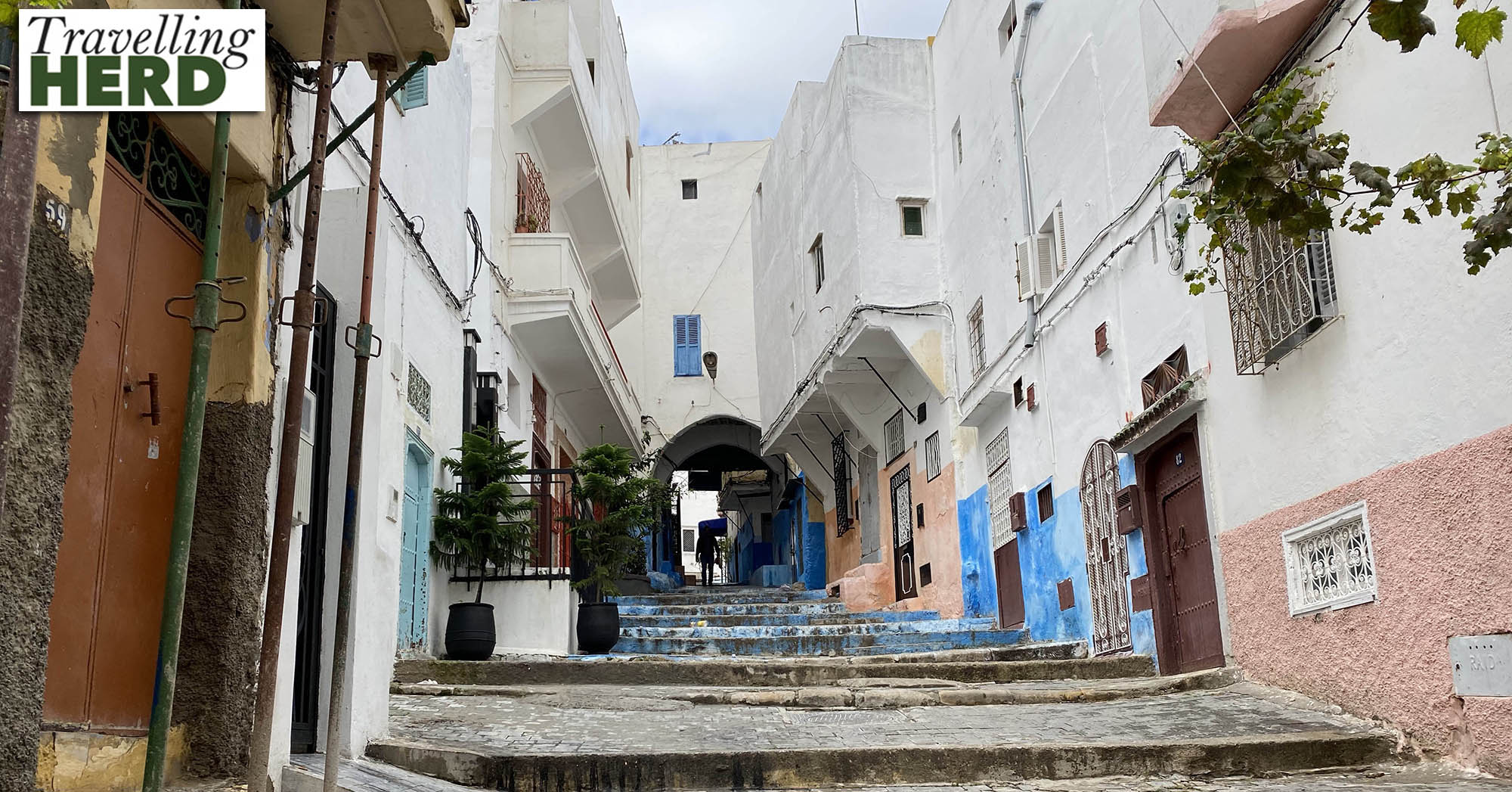
. . . many of which are painted a vibrant blue.
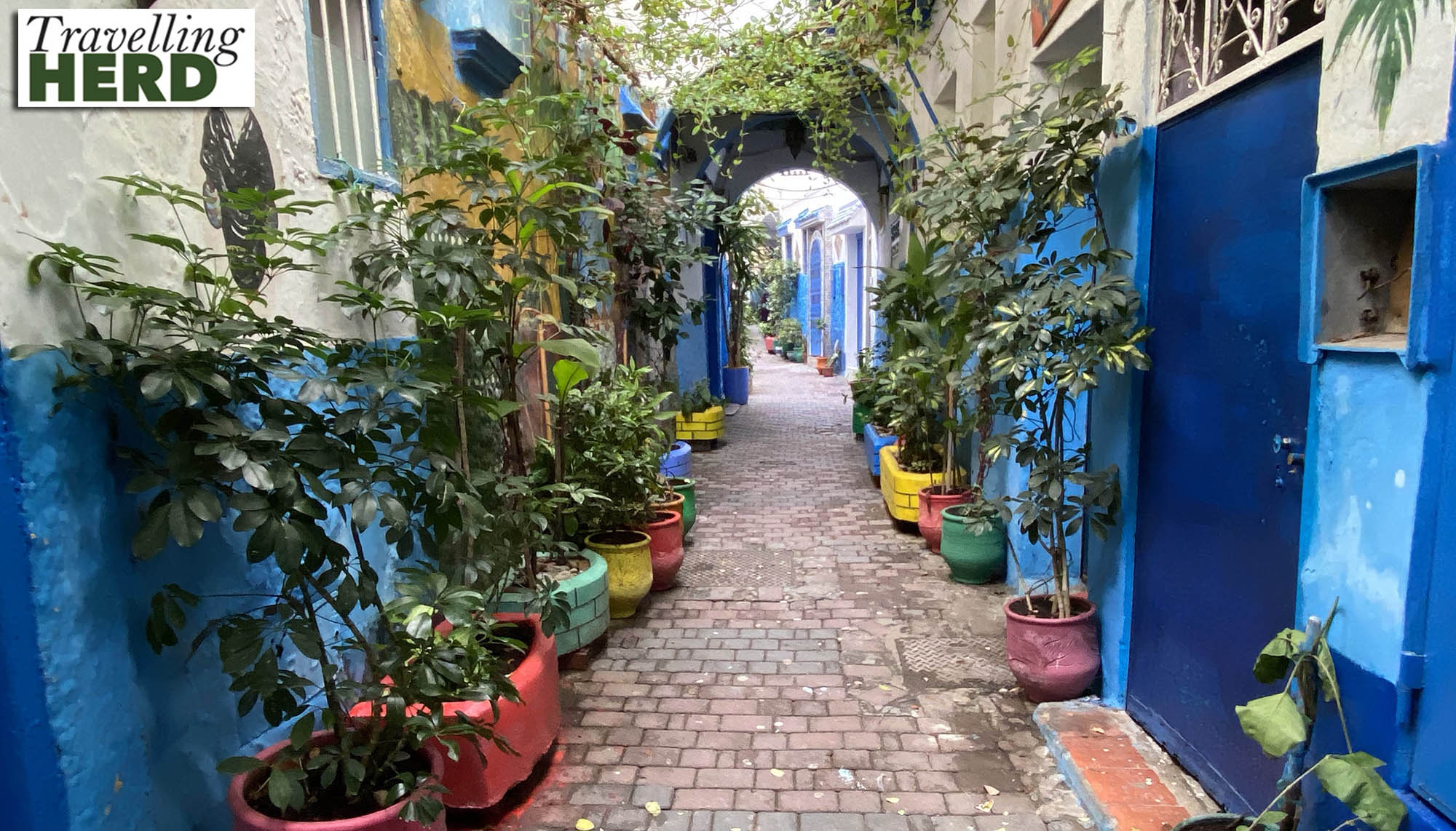
On our way back down we found that we were not the only ones to feel the need to pay tribute to The Clash.
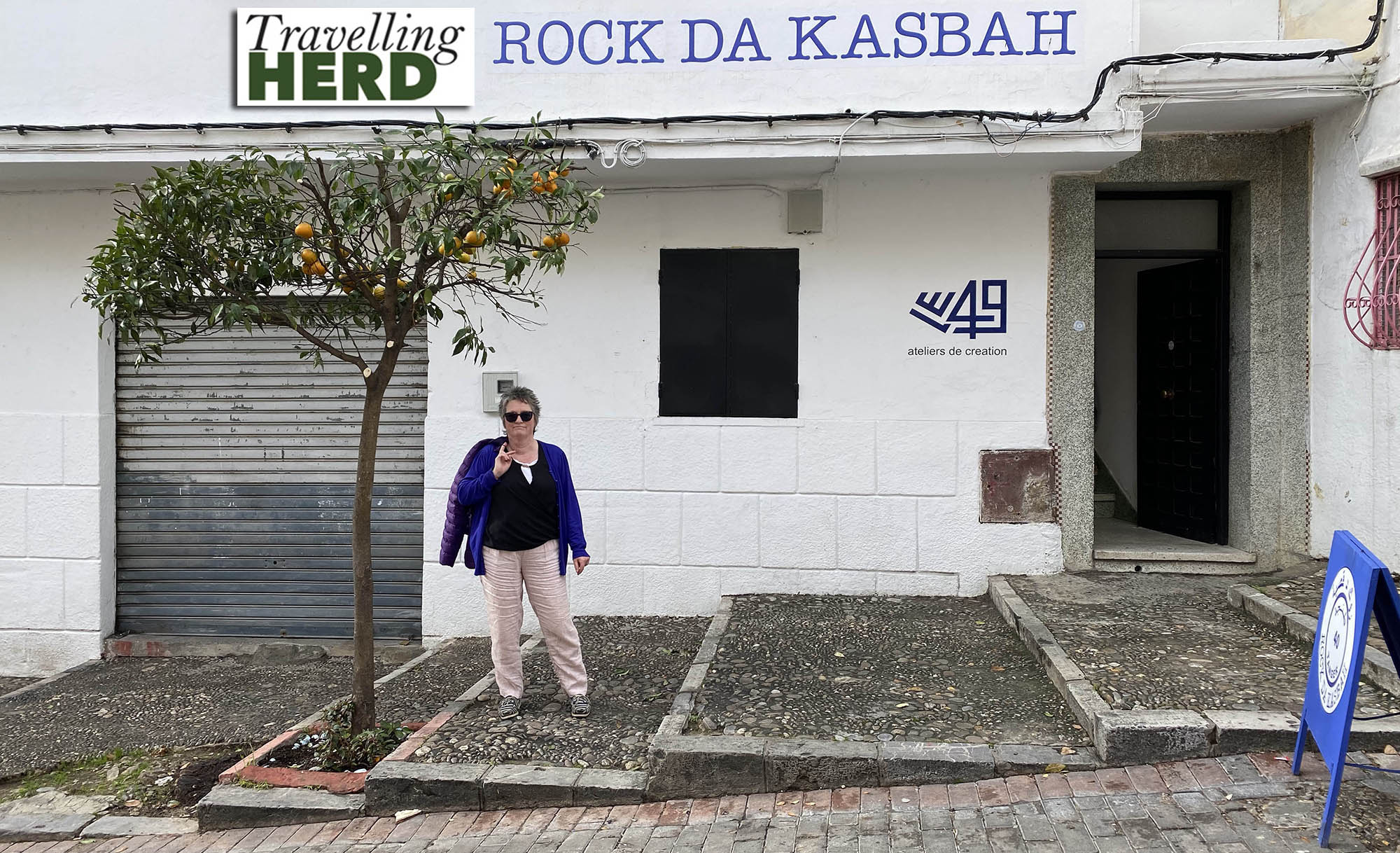
The Grand Socco, a derivation of “big souk” is also known as the Place du 9 April 1947 in honour of a pro-independence speech which King Mohammad V made that year.
The Mosque of Sidi Bou Abib on the south west of the square has an unusual and distinctive colourful tiled minaret.

This square links the old town with the new and the central fountain must be attractive when the water is flowing.
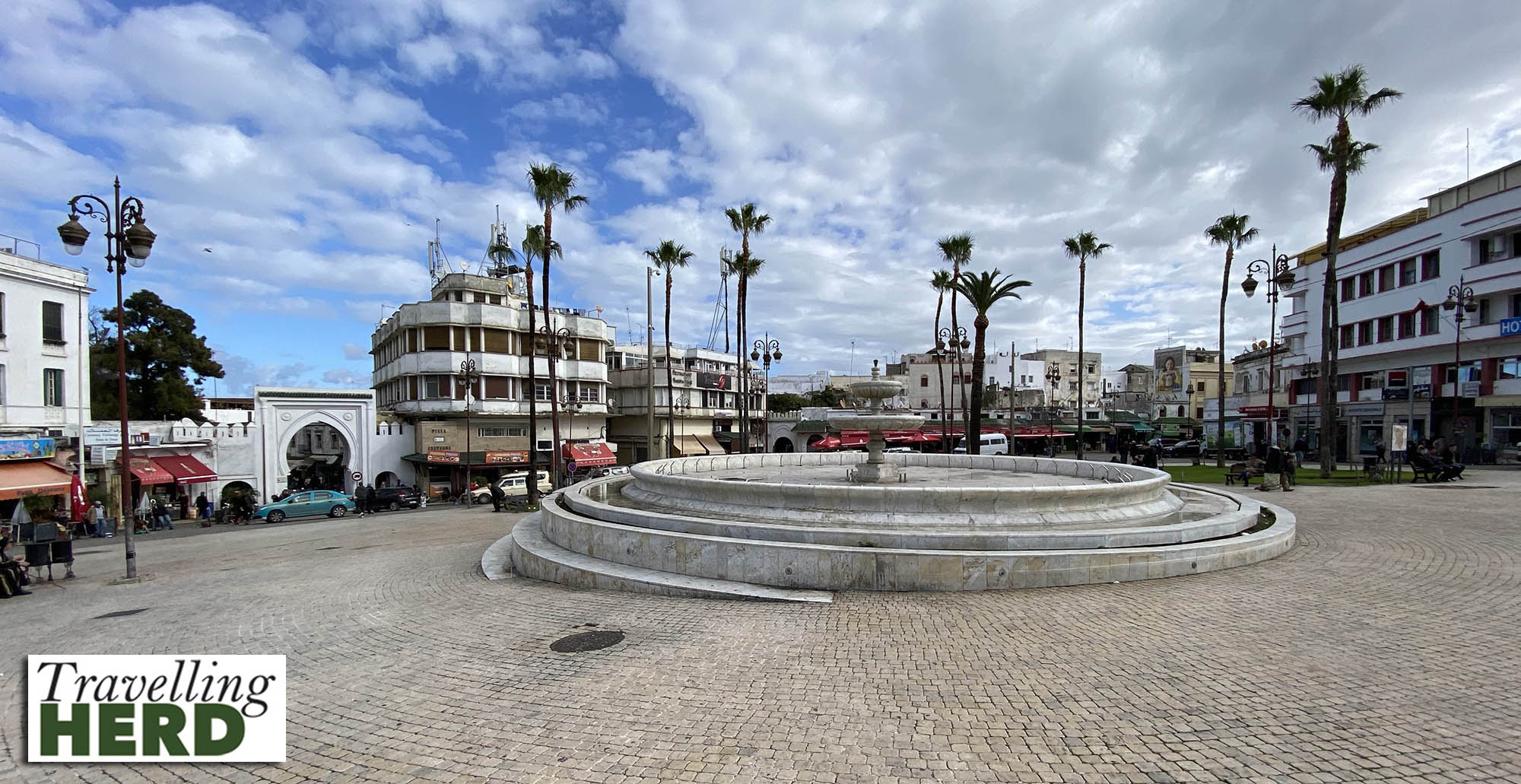
From here we walked on to the Anglican Church of Saint Andrew, where we were greeted by a man who, according to the notes provided inside the church, was “Yassine, the ever faithful keeper” and who opened up the building and welcomed us in.
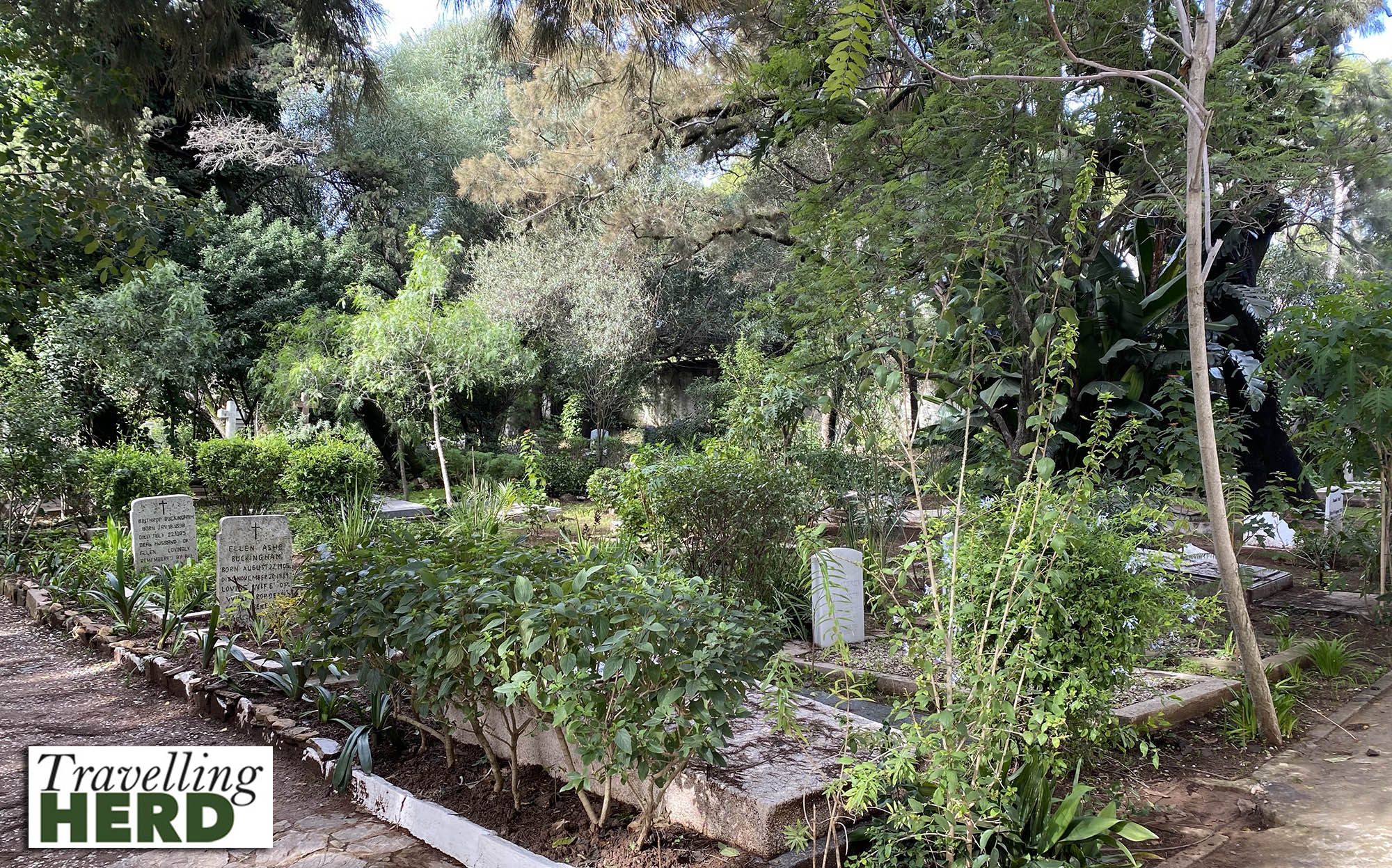
The graveyard includes Canadian and British airman who lost their lives in WWII.
This Church was built on land given to Queen Victoria by Sultan Moulay Hassan I in 1883 and it was subsequently consecrated in 1905. It is open to all and has a proud history of ministering to multiple faiths.
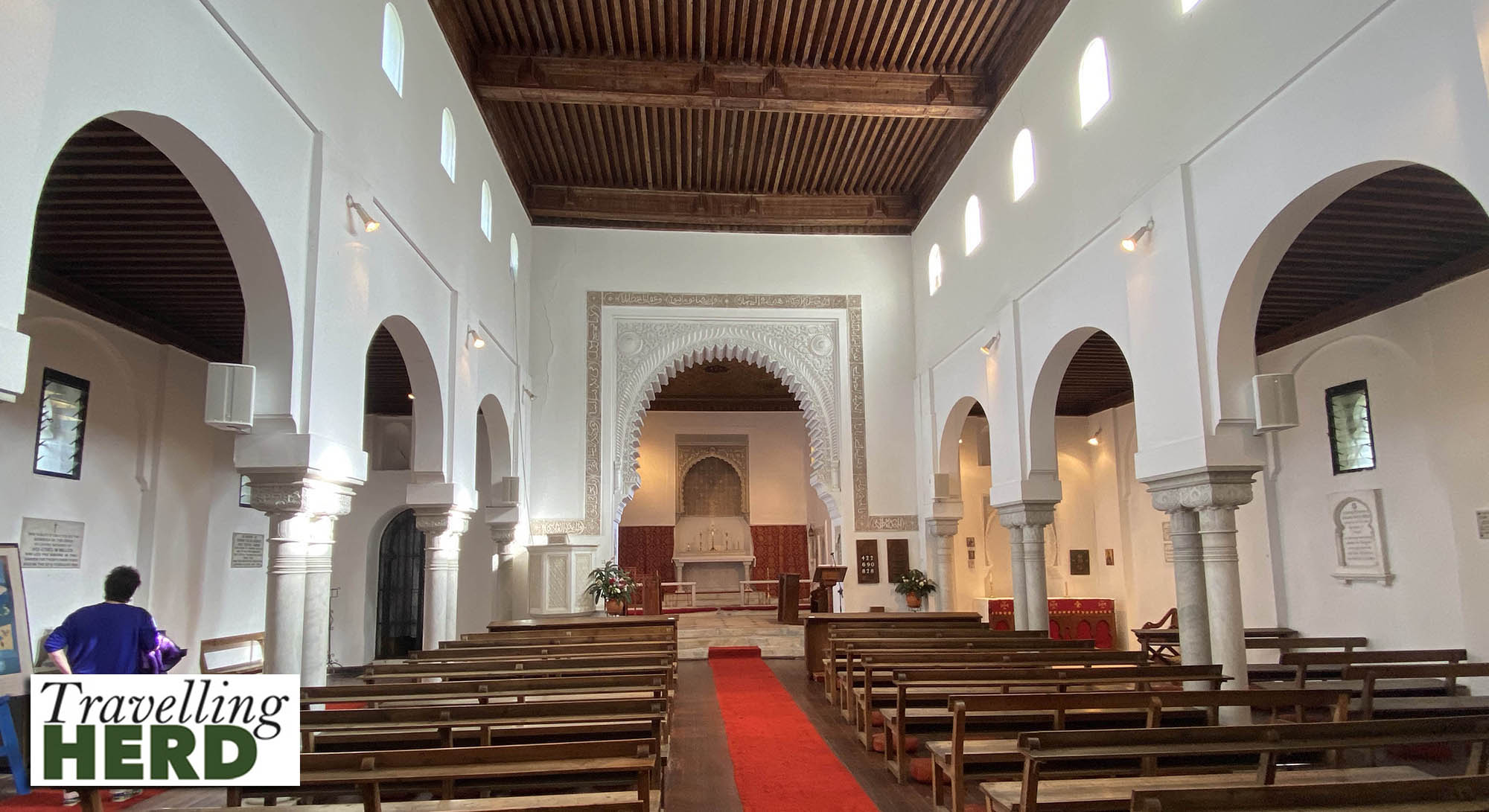
As we left we were pleased to see the St George’s flag flying.
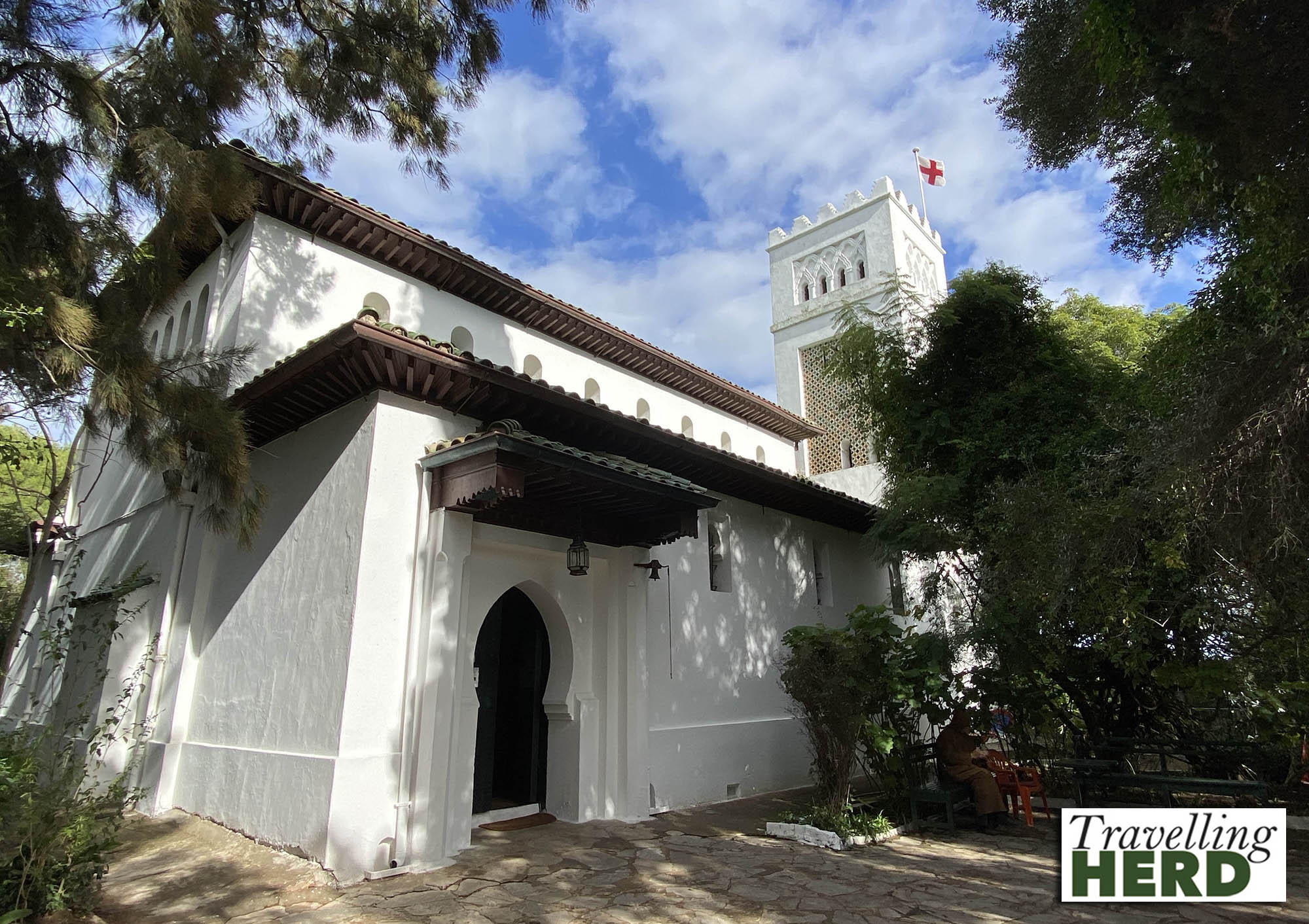
Walking back from the church to the Grand Socco, we found that Robert had dressed to complement the colour scheme of the iconic Art Deco Cinema Rif which was promising a week of European films.

Continuing the cinematic theme we passed the Gran Cafe de Paris which appears in The Bourne Ultimatum. Matilda, who has not seen the films in this series was expecting something a little more swanky from the outside.
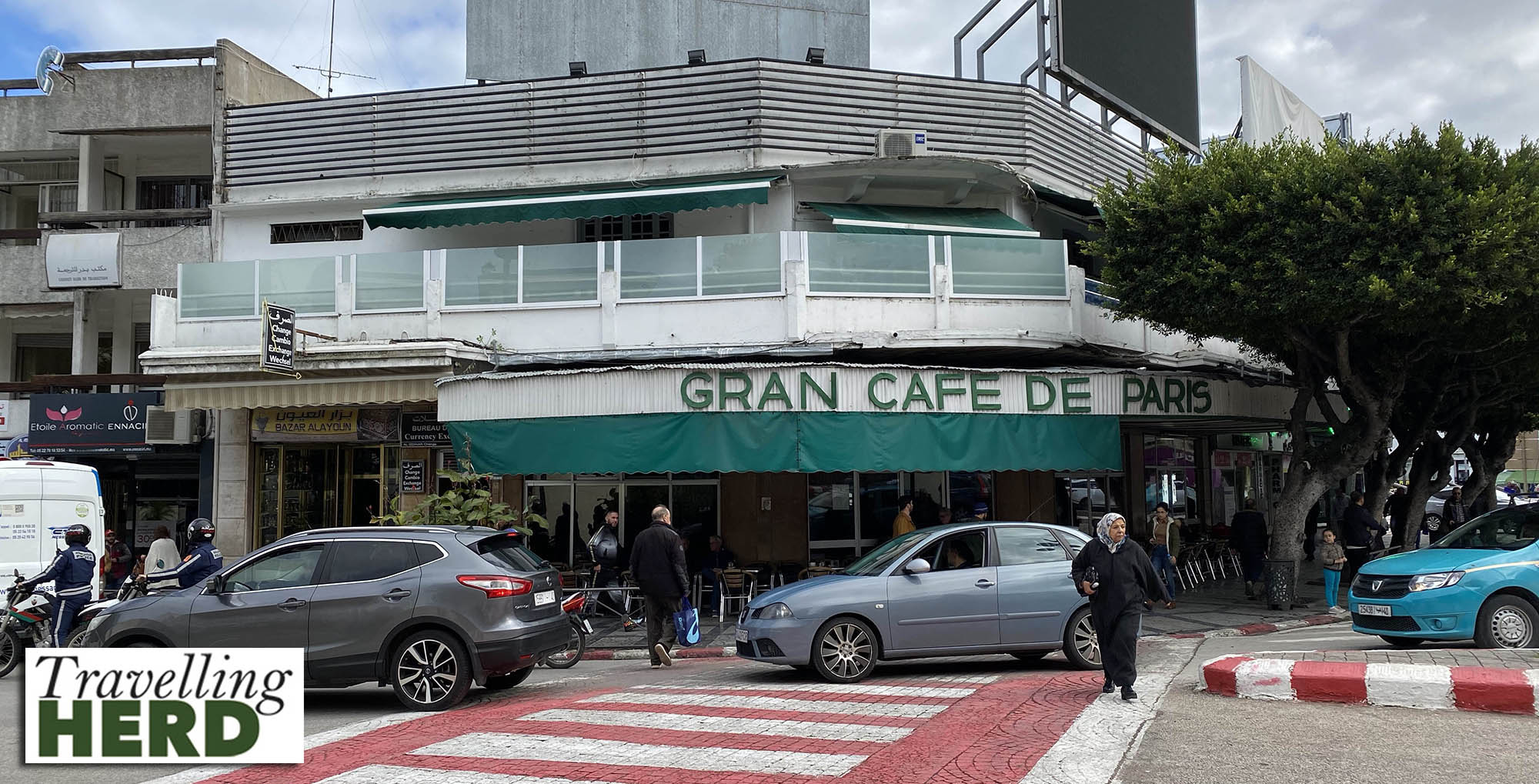
Walking along we passed further cannon emplacements with views towards the sea.
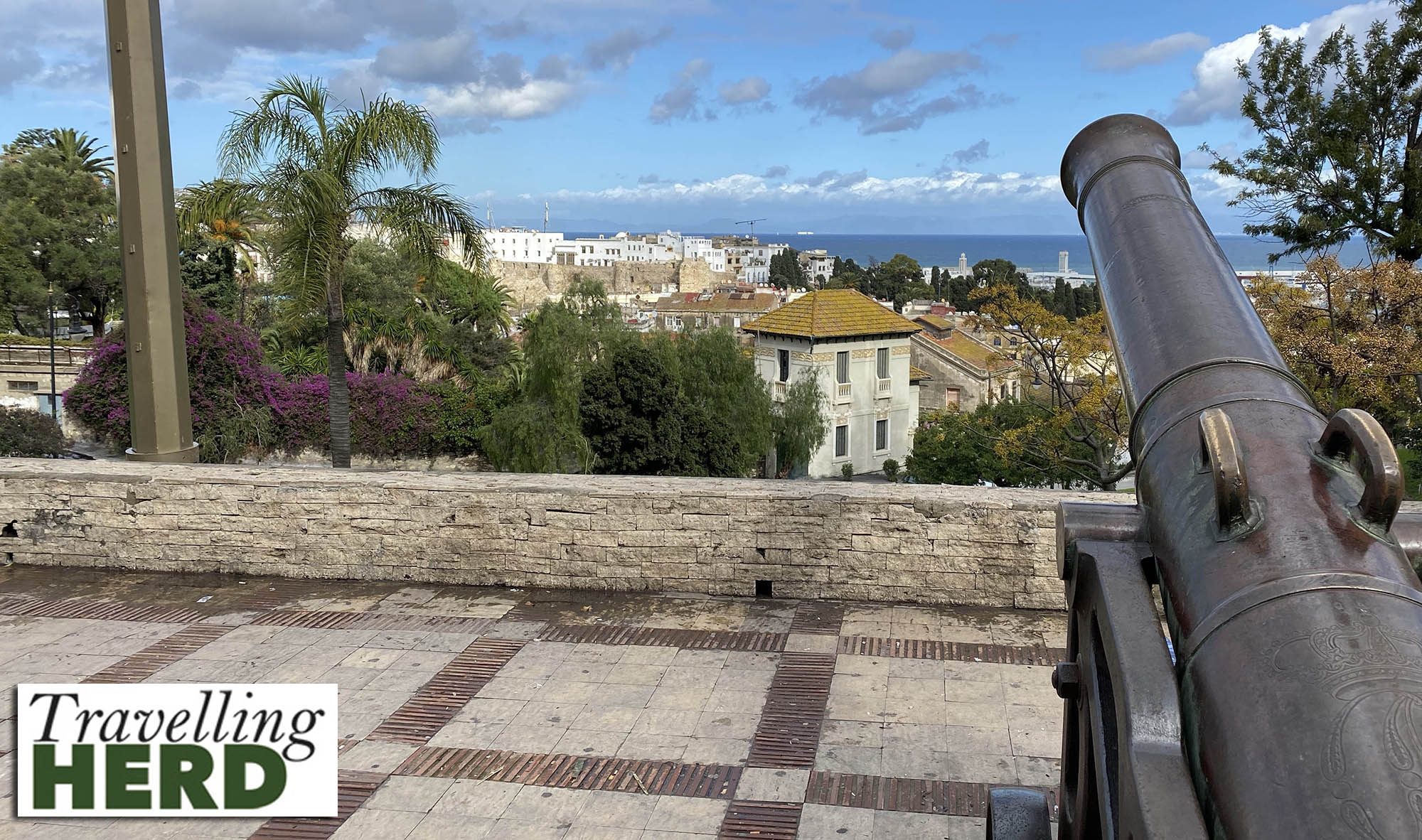
One of the recommended restaurants and bars is Tangerino on the seafront which has a Spanish influence and serves tapas. The food looked great, but it was a little too early for us to eat.
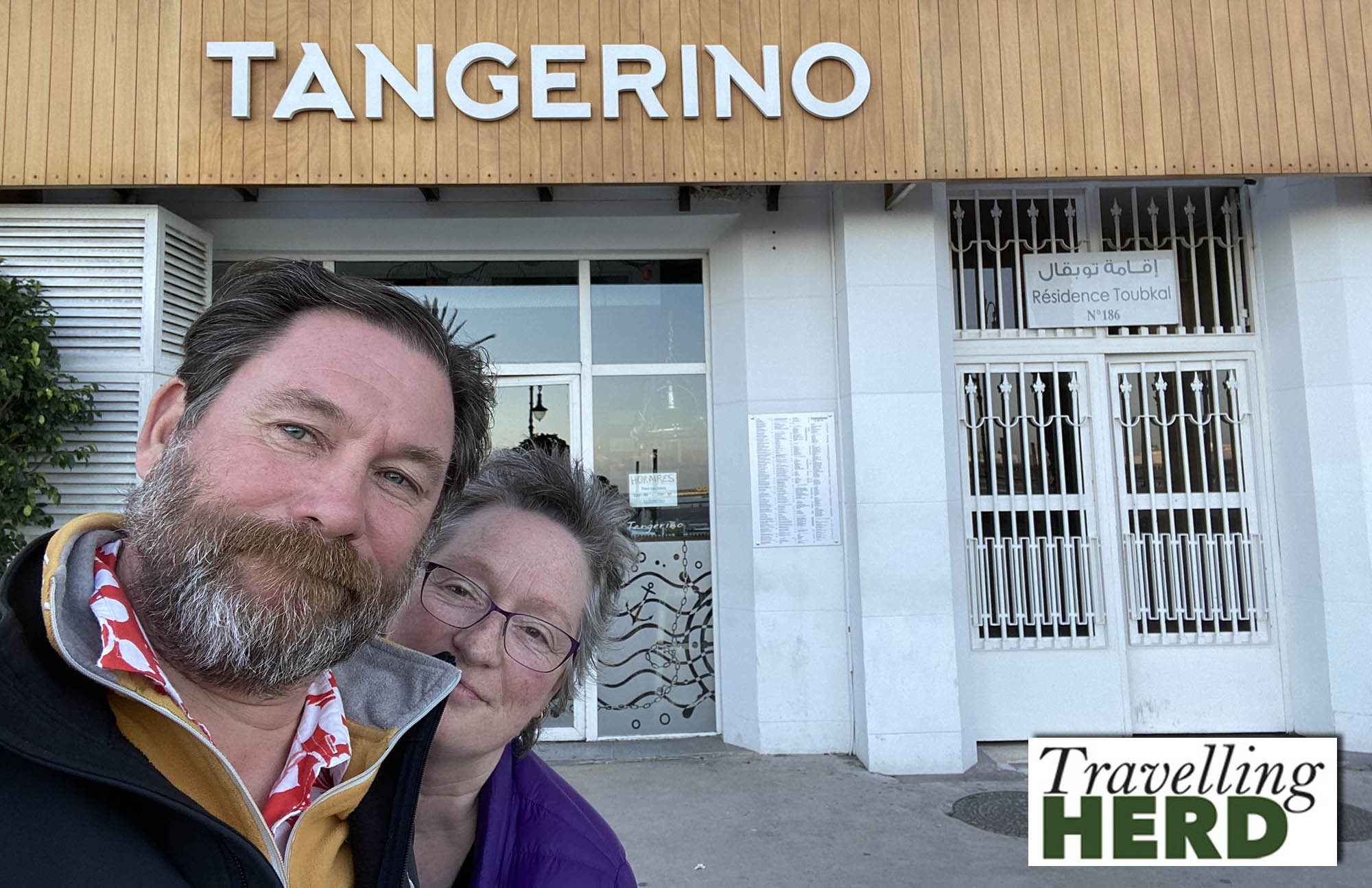
Robert has been impressed by the quality of the IT infrastructure here in Morocco. There is better 4G coverage than in many parts of the UK and the masts are cunningly concealed as palm trees.
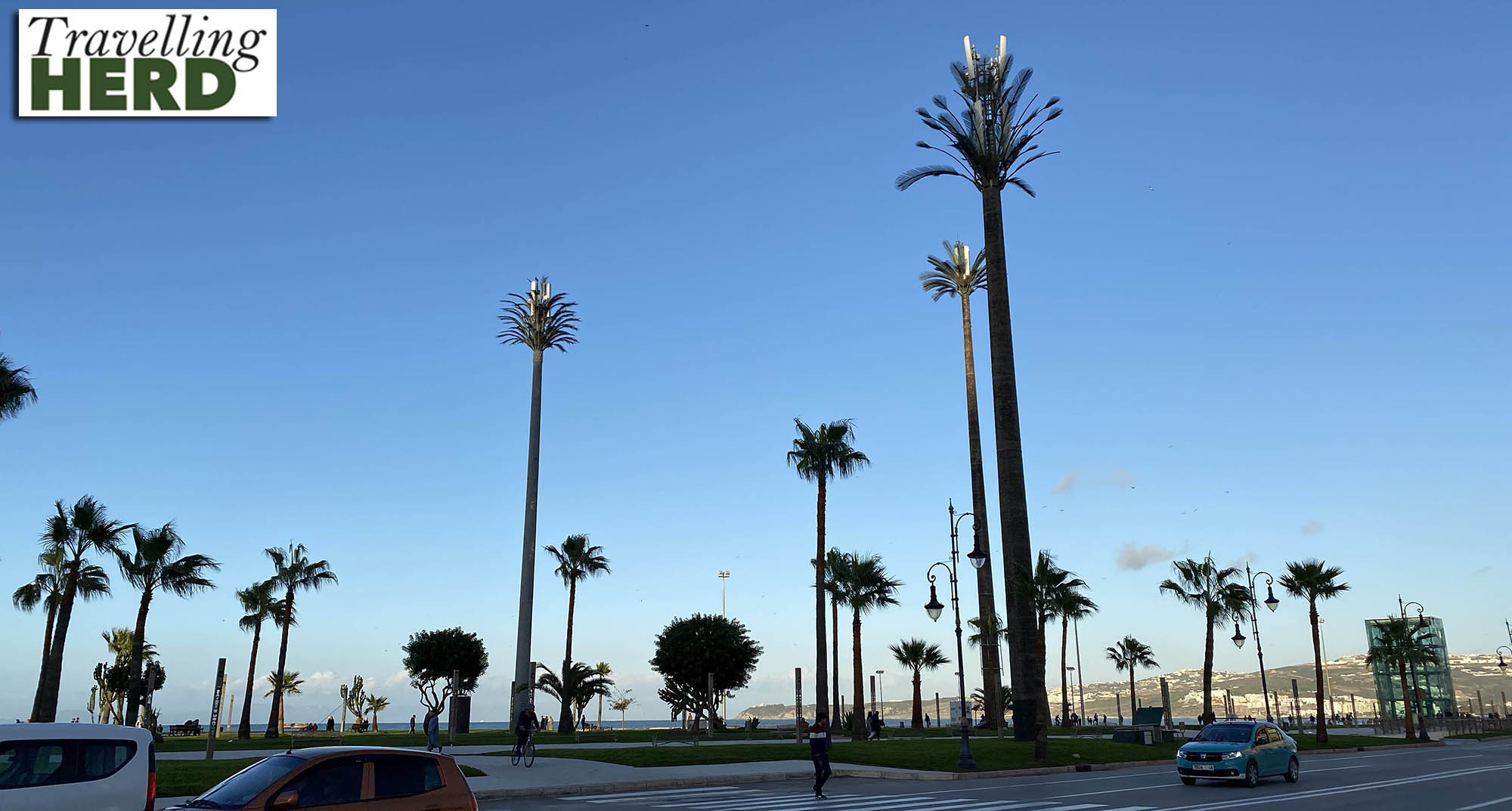
Back at the hotel we had a look at the swimming pool which would have been very inviting if the weather had been just a little warmer.

The views were impressive whatever the temperature.

Route Map:
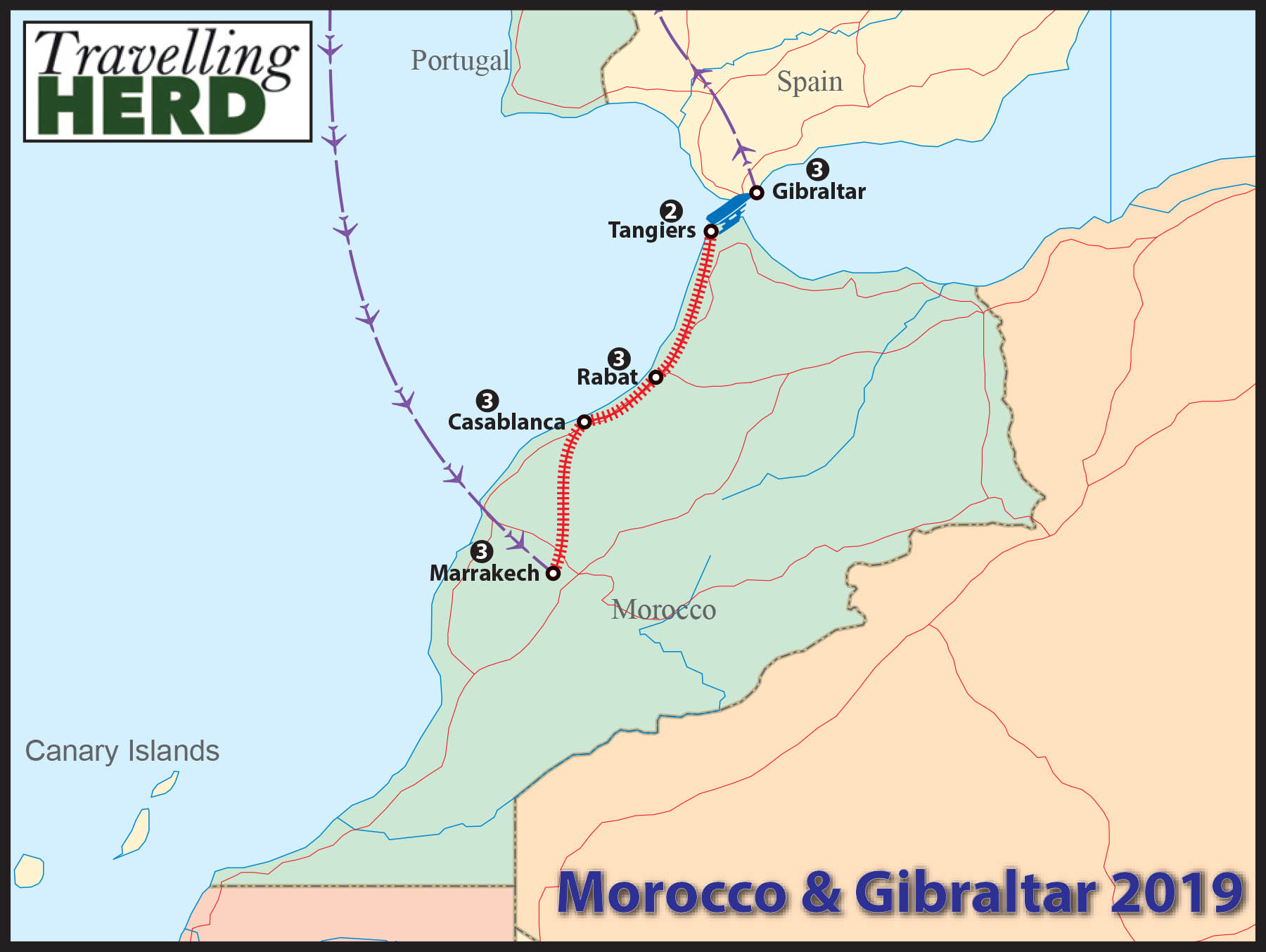
Selfie of the day:
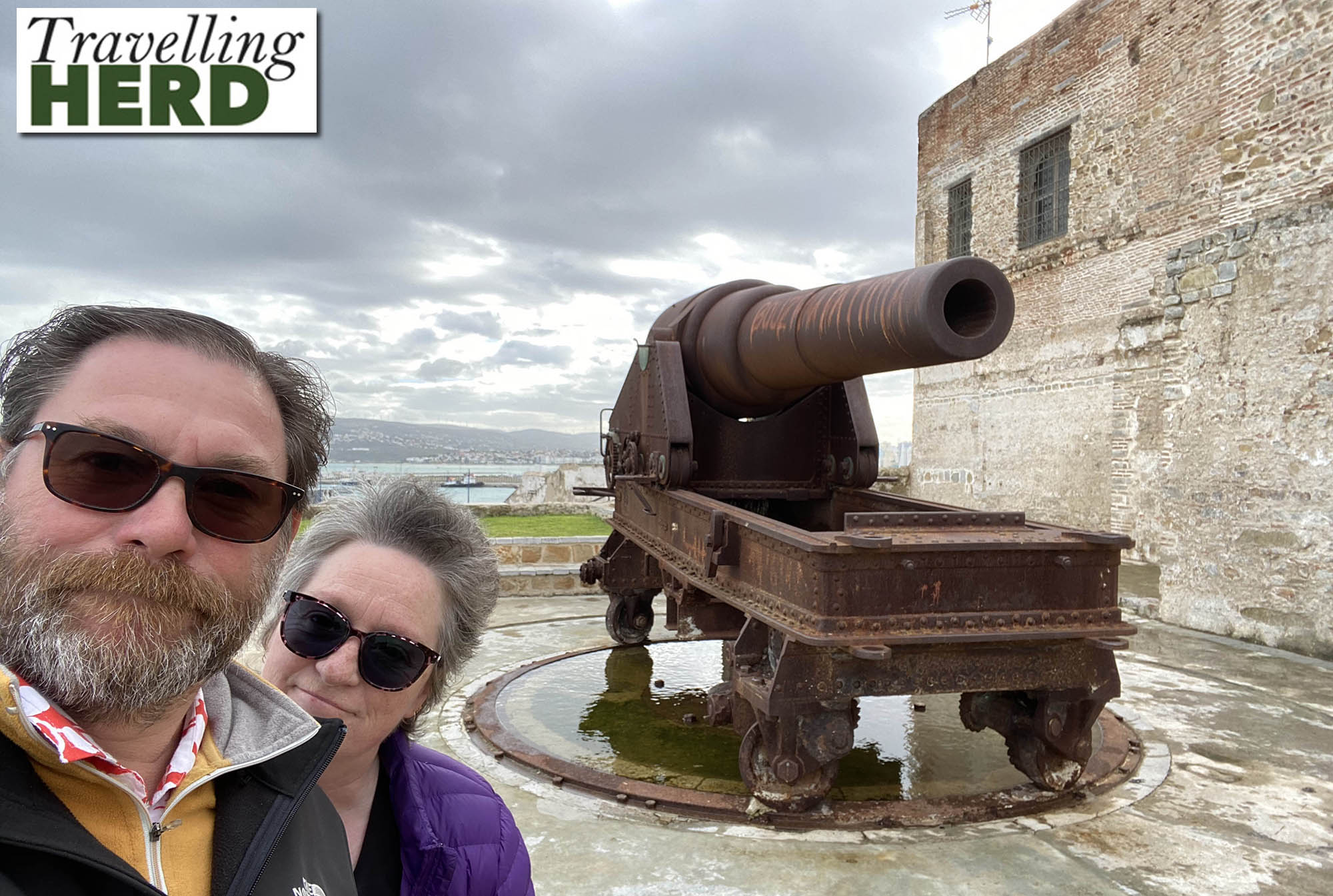





![Rock[s and] the Kasbah, Rabat](https://i0.wp.com/iciel.uk/imagesTH/19-09-Morocco/Post8/19-09-08-feature.jpeg?resize=510%2C510)